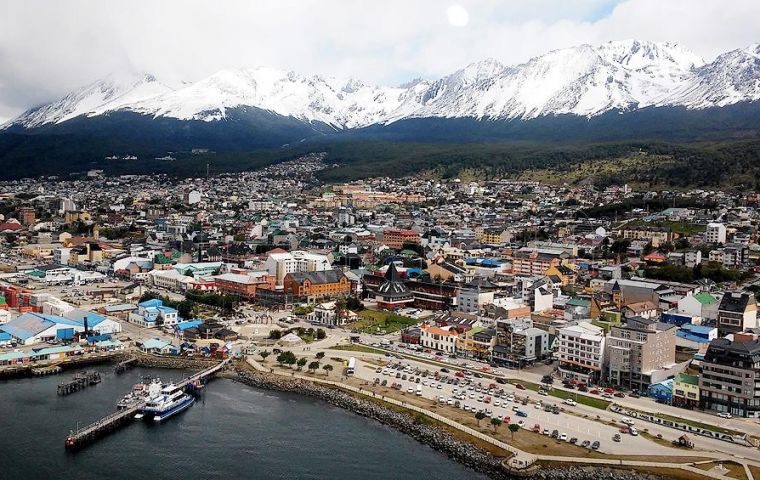MercoPress. South Atlantic News Agency
The long march of Tierra del Fuego before becoming a full province
 The now modern capital of Tierra del Fuego, a tourism hub but also a strategic point for Argentina
The now modern capital of Tierra del Fuego, a tourism hub but also a strategic point for Argentina The evolution of Argentine Tierra del Fuego from an incorporated national territory to a full province, in over a century and a half, has been described by Patagonia historian Bernardo Veksler, who usually contributes with the Diario del Fin del Mundo, edited in Ushuaia.
Veksler recalls that on 13 October 1862, the Argentine Congress passed Law 28 which established that “all existing territories outside the limits or possession of the provinces become national, even when they had been taken over by provincial governments since March first 1853”.
In 1878, Law 954 created “the Patagonia Governance giving an institutional framework to the extensive national territory, recently incorporated, which extends from the Rio Colorado to Cape Horn. The capital would be Mercedes de Patagones, with its population originally belonging to the Patagones Commandant, which was an advanced post of the Spanish empire River Plate viceroyalty. The seat of the capital was the Carmen de Patagones Fort, created in 1875 as a continuation of the Supervision of Patagonia establishments”.
Until Law 28 was promulgated the Argentina national territory was “based on the fourteen original provinces which covered an area of 1.500.347 square kilometres. Thus meaning that almost half of the total surface of the republic was the exclusive property of the Nation, ”a huge territory and at the time described as 'deserted' although occupied by its primitive inhabitants“
In 1884, Law 1.532 established the territories which were under Argentine national jurisdiction, Chaco, Formosa and Misiones in the North, while La Pampa, Neuquen, Rio Negro, Chubut, Santa Cruz and Tierra del Fuego in the South.
The new national territories had ”a strong degree of dependence from the central government and could become provinces once their population reached 60,000 inhabitants. The officials were appointed by the Executive, and in the case of Governors and Magistrates by the President in accordance with the Senate“
”In the specific case of Tierra del Fuego that status suffered several changes, since it was first created, National Territory; Maritime Governorship; Patagonia Province (Bill 14,408, from 1955); again National Territory (Decree 2.191 from 1957); and finally according to Law 23.775 from 1990, the province of Tierra del Fuego, Antarctica and South Atlantic Islands”. That is 106 years since the institutional history of the region.




Top Comments
Disclaimer & comment rulesCommenting for this story is now closed.
If you have a Facebook account, become a fan and comment on our Facebook Page!